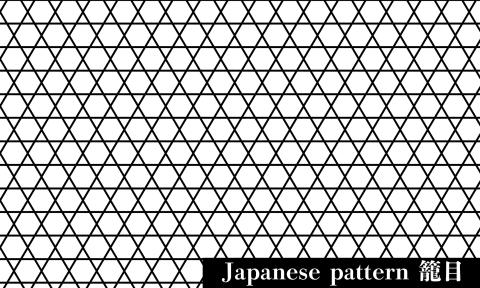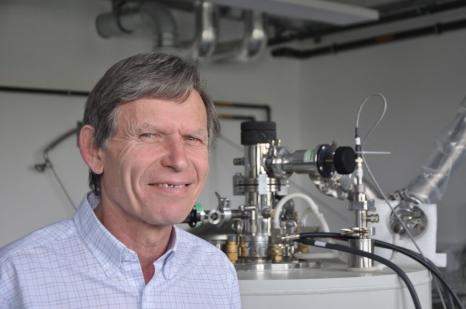
Philippe Mendels: exploring condensed matter
Philippe Mendels, an emeritus professor at Université Paris-Saclay, is a physicist and a world-renowned specialist in quantum materials and the use of local investigation techniques - nuclear magnetic resonance and muon spin resonance. Throughout his career at the Laboratory of Solid-State Physics (LPS - Univ. Paris-Saclay/National Centre for Scientific Research, CNRS), he has made significant discoveries in the field of condensed matter.
A brilliant mathematics student, Philippe Mendels developed a passion for physics during his 2-year preparatory course for a competitive exam. He attended the École Normale Supérieure de Saint-Cloud (now ENS Lyon), before earning a degree and a master's degree in physics at Université Paris-Sud (now Université Paris-Saclay), eventually becoming a certified physics teacher. After an internship at the Laboratory of Solid-State Physics (LPS - Univ. Paris-Saclay/CNRS) during his DEA (now equivalent to a 2nd year master’s degree), he completed his national service as a teacher in a secondary school in Togo. " It was a great experience ," he says. The young physicist then embarked on a PhD in 1982, where his vocation as a researcher truly flourished, and of which he says, " so many questions that demand answers with logic and scientific rigour." ».
In 1984, the physicist was appointed as a lecturer at Université Paris-Sud, joining the LPS’ NMR team, which later became the Spectroscopies of Quantum Materials (SQM) team. Philippe Mendels has spent his entire career at LPS, with the exception of a year spent at the University of British Columbia/TRIUMF in Vancouver from 2011 to 2012, where he delved into the rapidly emerging technique of muon spin resonance (µSR or muSR). He also obtained his accreditation to supervise research (HDR), partly focusing on the study of spin glasses. " These are tiny magnets that interact chaotically, eventually freezing in place like molecules in solidified rubber," explains Philippe Mendels. "It is a model system of disorder in condensed matter physics." In 1998, he was promoted to professor.
The fascinating world of superconductivity
Although superconductivity - a specific phenomenon where certain materials are capable of conducting electricity without resistance below a critical temperature - was first discovered in 1912, its theoretical model only emerged in the 1950s. It is the result of developments in quantum mechanics and statistical physics.
In 1986, the discovery of the first high-temperature superconductors was a major experimental breakthrough, captivating scientists and industries all over the world with the exotic properties of these new copper oxide-based cuprates. " By doping the magnetic phase of these materials in the same way as semiconductors, they transform into metals that become superconductors at low temperatures, able to conduct electricity without any resistance," Philippe Mendels confirms.
At the time, it was believed that this critical temperature would never exceed 20 Kelvins (-253°C), requiring liquid helium. "In just a few months, the critical temperature jumped from 40 to 90 Kelvins," explains the researcher, "breaking the 77 Kelvin barrier, the temperature of liquid nitrogen." The interaction between the metallic and magnetic phases of these materials raised a crucial question about the origins of superconductivity - a question that remains unanswered to this day. This discovery also opened up a new branch of quantum studies focused on new copper-based compounds.
A major discovery: the pseudogap
In 1989, Henri Alloul, head of the LPS team, led Philippe Mendels down a new research path. Using innovative experimental techniques, they jointly discovered the pseudogap, a fundamental property for the theoretical interpretation of superconductivity. For the next decade, they explored the strange and unique properties of the metal from which superconductivity emerges, " a prime example of a condensed matter problem where electrons form a collective state: correlated electrons." ».
To investigate the magnetic properties of superconductors, Philippe Mendels used nuclear magnetic resonance (NMR). " The idea was to disrupt the copper planes at the atomic level with non-magnetic impurities, such as zinc, for example." He was also the first to introduce the innovative technique of muon spin resonance to his team in France, which he had learned during his time in Vancouver. " MuSR is similar to NMR, but instead of using atomic nuclei, it implants muons into the material to probe its magnetic fields." As the second French team to use this technique, the LPS group quickly gained international recognition.
A new state of matter
In the mid-1990s, Philippe Mendels and his team decided to combine magnetic resonance tools with those of muSR to explore Anderson's model of "magnetic frustration" on kagome networks. These networks are so named because of their resemblance to a Japanese geometric pattern. " These are triangular magnetic structures with shared vertices, where antiferromagnetic interactions enforce an anti-alignment of magnetic moments. It is impossible to satisfy this condition on a triangle: if two moments are satisfied, the third is said to be 'frustrated', since it doesn't know which of the other two moments to align to," explains the researcher.
In 2008, through a muSR experiment, Philippe Mendels and his LPS colleague Fabrice Bert successfully probed the effects of frustration at temperatures close to absolute zero on herbertsmithite. This new material, named after British mineralogist Herbert Smith, is a copper-based kagome compound. The two researchers made a second major discovery in the field. "Unlike conventional magnetic compounds that order at low temperatures, we demonstrated that the spin movements in this compound persist without ever ordering, even at extremely low temperatures. This second discovery revealed, for the first time, a new state of matter: the ‘spin liquid’."
An award-winning career
In addition to his research, Philippe Mendels has taken on leadership roles. From 2015 to 2022, he directed the Laboratory of Excellence (LabEx) Physics, Atoms, Light, Matter (PALM), a group of 700 scientists from some 30 laboratories at Université Paris-Saclay. In addition, he led a European network of 300 scientists funded by the European Science Foundation. Philippe Mendels has been heavily involved in teaching at various levels. In particular, he was in charge of the master's degree in physics and applications at Université Paris-Sud. " I also remember the course on superconductivity and magnetism that Albert Fert and I developed for the Fundamental Physics master's degree. The students were very curious and eager to learn, which made teaching incredibly rewarding." In 2013, he co-founded the international General Physics master’s programme at Université Paris-Saclay with his physicist colleague, Tiina Suomijärvi.
Author of over 140 scientific publications, Philippe Mendels has been a member of the Institut Universitaire de France since 1998. In 2018, he was awarded the Palmes Académiques (Academic Palms) and, four years later, the prestigious Grand Prix Scientifique from the Charles Defforey Foundation of the French Academy of Sciences. « "This award is a dual recognition: one from my peers and another for our team's work, a source of great pride and shared joy." Even today, Philippe Mendels continues to contribute to his team's research. His passion for experimental investigation and the discovery of new fundamental concepts remains unchanged.

